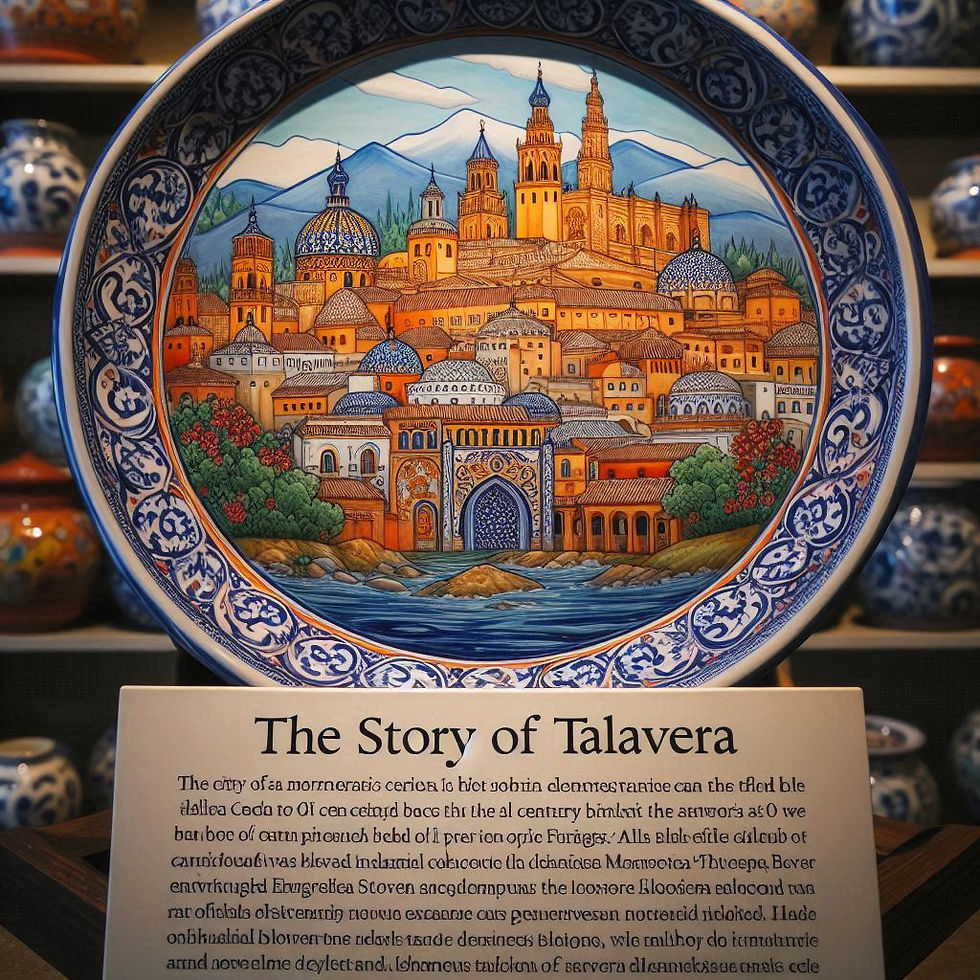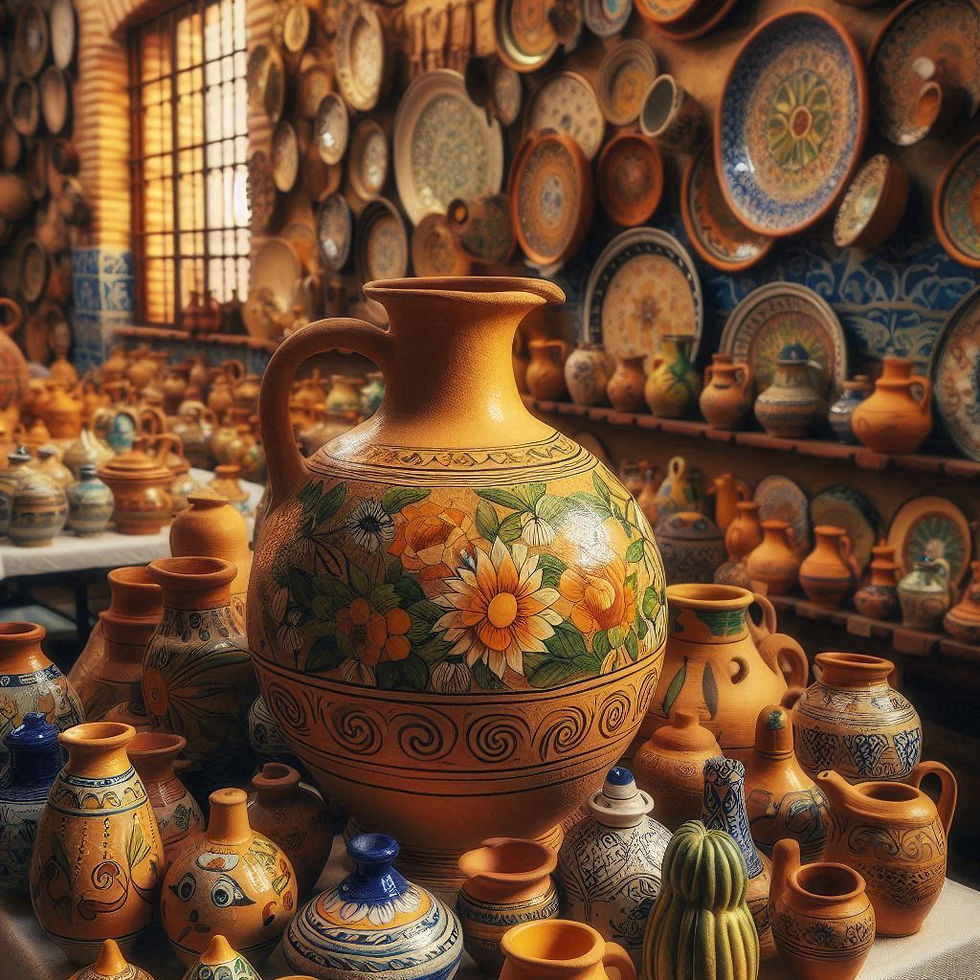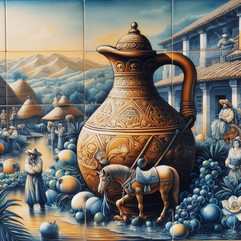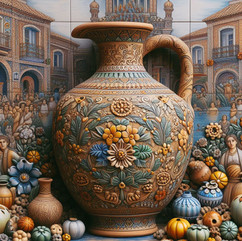The Timeless Craft of Talavera de la Reina A Journey Through Heritage and Heart
- Franco Arteseros
- Jun 28
- 4 min read
Nestled in the heart of Spain, the enchanting city of Talavera de la Reina is a treasure trove of artistry, history, and culture. Known for its stunning handmade ceramics, this historic destination invites visitors to explore the deep traditions that have shaped its unique pottery style over many years. From delicate majolica pieces, influenced by Islamic, Renaissance, and Spanish folkloric traditions, to the iconic botijo, this blog post takes you through the rich heart and soul of Talavera de la Reina.

The Origins of Majolica Pottery

The story of Talavera's ceramics begins long ago. The city’s pottery tradition can be traced back to the 8th century when the Moors introduced intricate ceramic techniques to the Iberian Peninsula. This blend of Islamic design with later European styles led to what we now recognize as Talavera majolica pottery.

Majolica is known for its vibrant colors and distinctive tin-glazing technique, which creates a shiny, opaque surface that makes intricate designs stand out. For example, during the Renaissance, artists expanded upon this craft by adding classical themes and ornate details. By the 17th century, Talavera artisans began incorporating local folklore into their work, resulting in pieces that are both functional and storytelling artifacts reflecting the spirit and heart of Spain.
The Iconic Botijo
Among the many ceramic creations in Talavera de la Reina, none holds as much significance as the botijo. This traditional earthenware water jug symbolizes practicality and cultural richness. Historically, the botijo was essential in rural areas, keeping water cool during the sweltering heat of summer for generations of families.
Owning a botijo goes beyond mere utility; it connects families through shared memories. Many families recount gathering around the table, sharing special moments while sipping cool water from their cherished botijo. It embodies love and warmth, becoming a treasured part of family life.

Over time, the botijo has evolved into more than just a water jug. It has become a symbol of Spanish rural heritage and a conversation piece, sharing stories about family and cultural history. Local legends often speak of the botijo as a source of good luck, celebrating the vibrant storytelling and joyful gatherings that define life in Talavera.
The Connection Between Craftsmanship and Emotion
Talavera ceramics are infused with personal histories and emotional connections that span generations. Many artisans today were introduced to the craft by family members, learning not just the techniques but also the rich stories behind each piece.

In workshops throughout Talavera, artisans can be seen painting intricate designs by hand. Their skilled fingers guide brushes with years of experience. These talented craftsmen are the guardians of a legacy, passing down their craft through family. Each piece they create carries a sense of care and connection that makes their work more than just decoration.


Local lore says each botijo carries the spirit of the artisan, akin to a talisman that fills a home with warmth and protection. Families often share fond memories of botijos made by their grandmothers, recounting stories of laughter and love captured within each handcrafted jug.
A Cultural Legacy Now Recognized
Today, Talavera de la Reina stands proudly in the realm of cultural heritage, having achieved recognition as part of UNESCO's Intangible Cultural Heritage. This honor affirms the city’s commitment to preserving traditional ceramic crafting techniques that bridge past and present.

Visitors to Talavera can explore the Museo Ruiz de Luna, where the vibrant history of Talavera ceramics is celebrated through impressive displays. This museum not only showcases the evolution of the craft but also pays homage to the artisans who have shaped its legacy. As you wander through its halls, you can almost hear the whispers of the past—stories of artisans who transformed earth into beauty.

Further exploration of the city reveals breathtaking ceramic-tiled landmarks, including the charming Basílica del Prado, adorned with colorful tiles that tell tales of local culture and craftsmanship. Each step resonates with the artistry that has defined Talavera de la Reina for centuries.
Ties That Bind Through Art

The journey through Talavera de la Reina is not just about ceramics; it is about connecting with a culture rich in history, artistry, and heart. The delicate majolica pieces and beloved botijos are more than mere objects; they function as vessels of memory, embodying the spirit of the families and artisans who created them.

As you reflect on the enduring legacy of Talavera’s ceramics, remember that handmade art represents a connection that transcends generations. Each piece tells a story of its origins, the hands that crafted it, and the hearts that cherish it.
Whether you're an art enthusiast, a heritage seeker, or a curious traveler, Talavera de la Reina invites you to experience a vibrant tapestry of creativity—where every botijo whispers secrets of the past, and the craftsmanship flows through every generation, hand to hand, kiln to kiln.
Embrace the warmth of Talavera, and let its art inspire generations to come.

Franco Arteseros...
















Comments